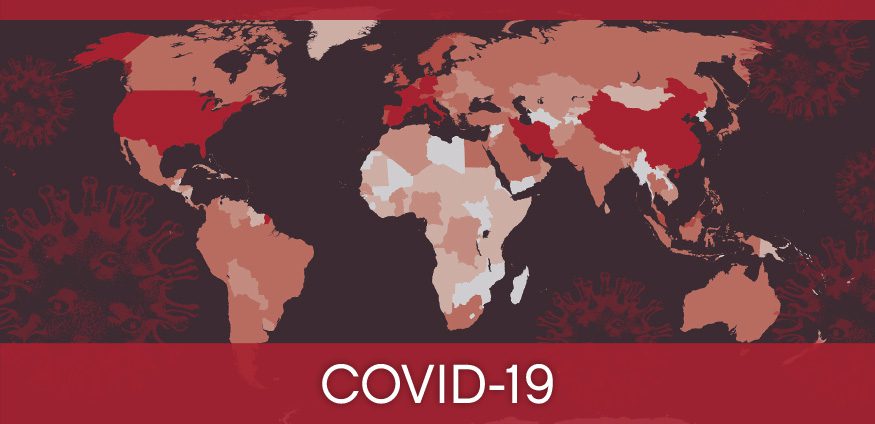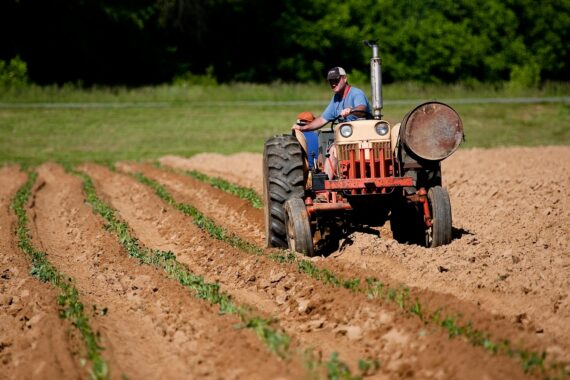This is the second blog in a three-part blog series on race, hunger, and the novel coronavirus (COVID-19). The pieces will focus on the impact of COVID-19 in the African American, Latino/a, and Indigenous communities, respectively.
By Marlysa D. Gamblin
Many factors make Latino/a communities more vulnerable to the COVID-19 pandemic. During the H1N1 pandemic in 2009, Latinos had twice the rate of confirmed cases as their percentage of the U.S. population. This leads advocates to expect similar racial disparities with COVID-19. In addition, about 40 percent of Latinos have reported that they view COVID-19 as a major threat to their health—twice the rate of white respondents. The Latino/a community is diverse and people have varying degrees of susceptibility based on factors such as citizenship status, race, economic well-being, and detention status.
As a community, however, Latino/as disproportionately work in jobs that require their physical presence and do not offer a telework option. In a survey of U.S. citizens who are employed, the Economic Policy Center found that Latinos have the lowest proportion of workers who are able to telework (16.2 percent, compared to 19.7 percent for African Americans, 30 percent for white Americans, and 37 percent for Asian Americans).
Some groups within the community are likely to have even less option for telework because they have higher rates of service-based jobs, including home health aides, food delivery workers, and agricultural workers. These jobs disproportionately employ immigrants—particularly guest workers and those who are undocumented—as well as Afro-Latino/as.
Latino/as, whether born in the United States, naturalized citizens, or immigrants, work disproportionately in the country’s 10 lowest-paying jobs. These jobs, such as being a cashier or domestic worker, often entail contact with many people. They usually do not offer benefits such as paid sick leave. Workers in these fields are more likely to contract the virus than people who can work at home and, if they become ill, they are more vulnerable to losing their jobs and/or being unable to pay their rent and other bills.
Latino/a undocumented immigrants are among the most vulnerable people in the United States. Their lack of protections in the workplace, restricted access to many safety net programs, low pay, and ineligibility for unemployment insurance even though they pay taxes cumulatively increase their vulnerability to contracting the virus, losing their jobs, and suffering from hunger. Undocumented workers who have not lost their jobs are being put in situations that increase exposure to the virus. Farmworkers, for example—the majority of whom are undocumented—are still considered “essential” worker in places that have stay-at-home orders. Without these workers, people across the county would not have reliable access to food. In addition, many undocumented immigrants, regardless of employment status, are afraid to visit food banks and afraid to seek medical care because of the risk of being detained. This increases the risk that the virus will spread to their families and wider communities.
Latino/a undocumented immigrants are also more likely to contract the virus because they face higher levels of food insecurity, which compromises their immune system. While this subject is under-researched, it is reasonable, in Bread for the World Institute’s view, to believe that food insecurity among undocumented immigrants is much higher than the 18 percent hunger rate for immigrants as a whole.
People who were forced to flee their homes in Central America’s Northern Triangle countries (El Salvador, Guatemala, and Honduras) and are now in detention in the United States are also at very high risk of contracting COVID-19. Many detention centers lack the soap people need to wash their hands regularly and maintain good overall hygiene to reduce their risk of spreading the virus to others. Detention centers are overcrowded, and officials are not currently following the Centers for Disease Control guidance on social distancing and handwashing. There have been numerous news reports about extremely poor quality food, lack of essential nutrients, and reports of hunger in detention centers across the nation. People living in these conditions are likely to have weakened immune systems and are therefore at higher risk of severe illness or death if they contract COVID-19.
In each of these groups, Afro-Latino/as confront anti-black racism in addition to the many other inequities just mentioned, which makes them even more susceptible to contracting the virus and at increased risk of death if they do.
Ending global hunger calls for everyone—the entire world population—to prioritize racial equity in their responses to the pandemic. Unfortunately, the data collected thus far is limited, and much of it has not been disaggregated by race, ethnicity, class, gender, and citizenship status, making it difficult or impossible to determine an equitable share of relief services and resources for the Latino/a community that meets their level of need. The COVID-19 response plan should address the inequities Latino/as face, whether they affect citizens, documented immigrants, undocumented immigrants, recent arrivals seeking asylum, or any combination of the above. It is also important to address the specific additional, yet under-researched, obstacles and needs of Afro-Latinos in each of these categories.
Marlysa D. Gamblin is a senior domestic policy advisor at Bread for the World Institute.



